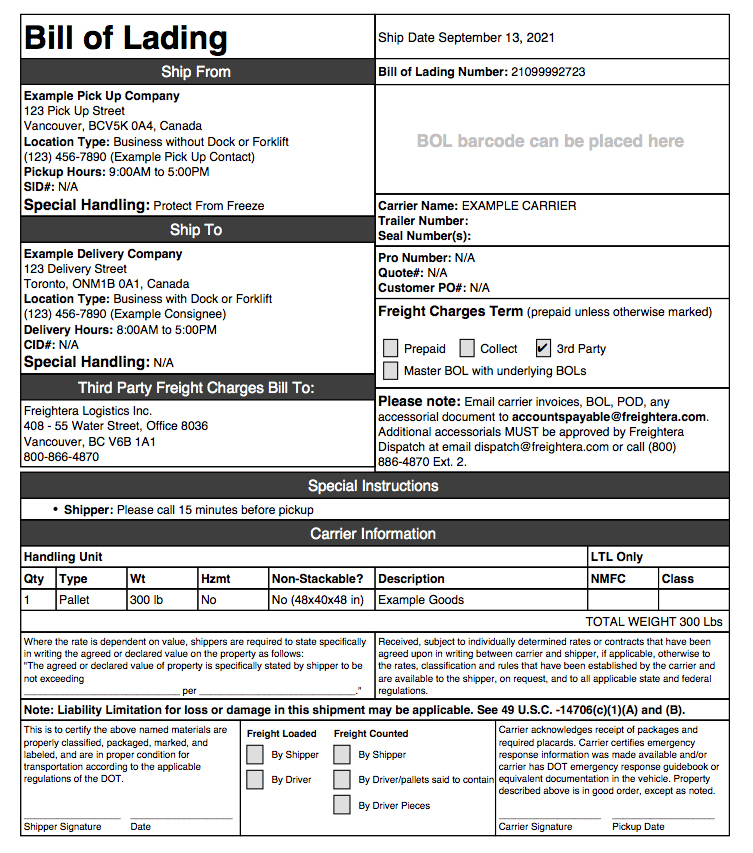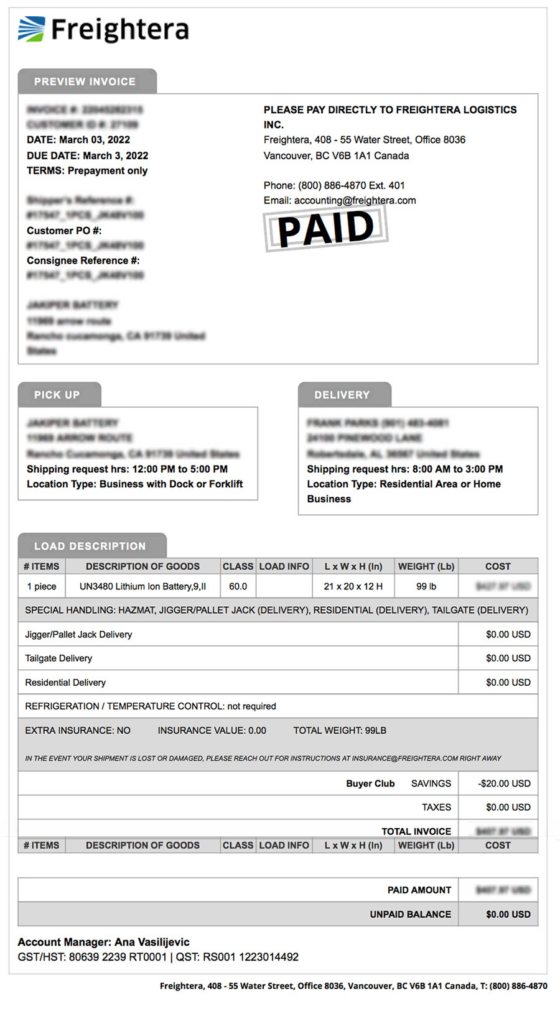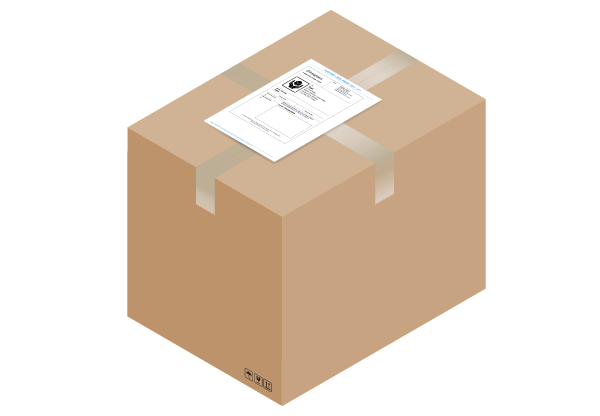There are a fair few shipping documents and the processes for using/acquiring them are no joke either.
We’ll go into detail about the BOL, customs/commercial invoices, certificates of origin as well as many others and their application ahead.
Bill of Lading (BOL)
A legally binding document that contains all of the information about your shipment.

This document is what carriers use to make sure that the quoted rate is accurate. Any discrepancies between the actual shipment and the BOL will result in a change in pricing.
The BOL has to contain the following information:
- The billing party information;
- The shipper’s and consignee’s addresses and location types;
- The shipper’s and consignee’s contact information;
- The shipment description and dimensions;
- The requested pickup and delivery dates (as estimates);
- Carrier’s information;
Shipping labels
An extension of the BOL, shipping labels contain the basic information about the shipment so the carrier can more easily confirm which pieces go with which BOL. Along with that, they help prevent pallets from getting lost. Labels need to be attached to each piece of your shipment.
Customs (Commercial) Invoice
It is a document used for customs clearance. Its primary use is to show the origin and value of the cargo. In fact, without a commercial invoice, your shipment would be unable to cross the border.
Every customs invoice needs to contain the following information:
- The country of origin;
- The shipper’s and consignee’s information (company name and the full address);
- The list of items shipped;
- The value per item shipped and the total value of the shipment;
Packing list
A packing list is a document detailing all of the relevant information about your shipment with the packing type, weight, dimensions, volume per item shipped, as well as any markings per item listed.
This document is sometimes required during customs clearance. Customs officials use it to identify the packages they’d like to inspect, without having to inspect each piece shipped individually.
Certificate of Origin (CoO)
This document is a certificate stating the country of origin or manufacture of the goods being shipped. This document is issued by the local Chamber of Commerce.
The CoO is necessary for the import of goods. Customs authorities use it to determine whether a shipment is eligible for import and whether it is subject to duties.
Gift Certificate
The gift certificate, in the shipping industry, is used instead of a commercial invoice.
In the case that you are shipping an in-kind donation, your shipment would need a gift certificate instead of a commercial invoice and a certificate of origin. This document is only used when shipping donations.
Freight Invoice
The final invoice for your shipment detailing the charges for each of the services you requested. A freight invoice may vary from your original quote in the case that your shipment’s description varied from the information provided during quoting.

Forwarder’s Certificate of Receipt
This document serves as proof of receipt issued by a freight forwarding company to the shipper.
Dangerous Goods Declaration (DGD)
Is a document that shows that your shipment has been labeled, packaged, and declared as per the dangerous goods regulations.
Most ground carriers will allow using a BOL instead of a DGD as long as the BOL contains (along with the standard information) a UN code, the proper shipping name, the hazmat class, and the packing group.
Import/Export Customs Declaration
A document used to express a party’s desire to place a shipment under a certain customs procedure. It also details the information of the goods being imported or exported. The shipper or a third party acting on their behalf (such as a customs broker) can lodge the declaration with the customs office.
Consular invoice
Some countries require a consular official of the foreign country to certify an invoice. This document details the value of the shipment, as well as the shipper’s and consignee’s information.
Production Certificate
Areas that regulate production sometimes require production certificates. This certificate details the materials or production types used to make the production process sustainable.
Phytosanitary Certificate
When shipping plants or plant products, a phytosanitary certificate is required to prove that your shipment is free of regulated pests and that the shipment conforms to the regulations imposed by the importing country.
Inspection Certificate
This document confirms that the shipment was in good order at the time of inspection (which usually takes place before shipping).
Fumigation Certificate
A document confirming that wooden packaging such as pallets or crates has been fumigated.
This certificate is sometimes also known as the pest-control certificate.
Wood packaging declaration
Some ground carriers will require you to sign a wood packaging declaration.
A wood packaging declaration details the specifics of the packaging used such as if the materials used were sourced from Canada or the US, or if they are made of an entirely different material, etc.
Dock/Warehouse Receipt
This is a receipt given to the shipper by the carrier at the time the goods are dropped off at the shipping terminal. This document confirms the carrier’s responsibility to store the freight until the time of shipping.
A dock receipt is extremely valuable in case of shipment damage.


